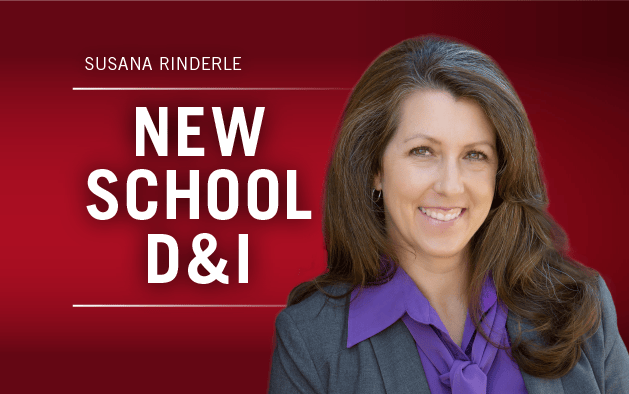Workplace Culture
Four Steps to Achieve Inclusiveness
By Susana Rinderle
Jan. 7, 2014
 The new year is an ideal time to reflect on past triumphs and tribulations, and set the course for the days and months to come. Thoughtful attention to language is a critical way we create reality and set the stage for D&I success (see this post on the term “cultural competence.”) One way to do this is to turn the “I” of “inclusion” into “inclusiveness.” To some, inclusiveness may sound the same as inclusion, but inclusiveness offers a subtle one-degree shift from old ways of thinking and better orients your compass toward the wildly successful results that D&I offers.
The new year is an ideal time to reflect on past triumphs and tribulations, and set the course for the days and months to come. Thoughtful attention to language is a critical way we create reality and set the stage for D&I success (see this post on the term “cultural competence.”) One way to do this is to turn the “I” of “inclusion” into “inclusiveness.” To some, inclusiveness may sound the same as inclusion, but inclusiveness offers a subtle one-degree shift from old ways of thinking and better orients your compass toward the wildly successful results that D&I offers.
Inclusion, while a necessary counterpart to diversity, is a noun. It implies a static state, a reachable endpoint. It suggests something that can be easily measured and recognized. It’s a diversity 1.0 concept that might be achieved through what I call the Skittles approach: ensuring we have a colorful mix — gathering some of those (color, race, gender, age, type, etc.), and a couple of those, and a few of those. Colorful mix equals done! However, diverse mixes don’t achieve superior results by themselves — in fact, the mix without effective communication and positive relationships gets us more of what we don’t want in organizations, and less of what we do (see Scott E. Page’s work).
Inclusiveness is also a noun, but its root — inclusive — is an adjective that describes a state of being. Inclusiveness implies a dynamic, changing state that’s a moving target. It’s a diversity 2.0 (or 3.0) concept in that achieving inclusiveness requires ongoing attention, monitoring and dialogue. It’s never completely done. Its measurement requires creativity and flexibility.
How would you measure and achieve inclusiveness? First, get super clear on your D&I goals. This helps prepare your organization for the journey. D&I is not just about the mix but about leveraging the mix and making it work effectively to generate more brilliance and excellence. That brilliance and excellence should yield measurable results the organization cares about. Quantifying the impact of D&I on those measurable results should be the goal.
Second, determine what’s getting in the way of employees and leaders doing their best work, bringing their full selves to work, and enthusiastically contributing their brilliance and excellence. Is it substandard onboarding and training? Is it a lack of accountability and integrity? Oppressive or unfair policies or practices? Ineffective leadership behaviors? Poorly managed stress or ineffective communication? A little of each? What is at the heart of these gaps?
Third, identify what’s already working. Organizations can unintentionally damage or destroy what’s working well while attempting to solve problems. Identify what’s working and keep doing those things!
Fourth, act, with measurable milestones and a system of accountability to ensure goals are reached on time. Also, remain flexible and creative. Since inclusiveness is a shifting state of being, the challenges, opportunities, strengths, demographics and market are moving targets that require constant monitoring and nimble responses.
Arguably, one could follow the same four steps and obtain similar results while calling it inclusion, but if your goal is inclusiveness — a shifting state of being where diverse people bring their brilliance and excellence to work and generate results beyond your wildest dreams — why not call it that?
Schedule, engage, and pay your staff in one system with Workforce.com.
